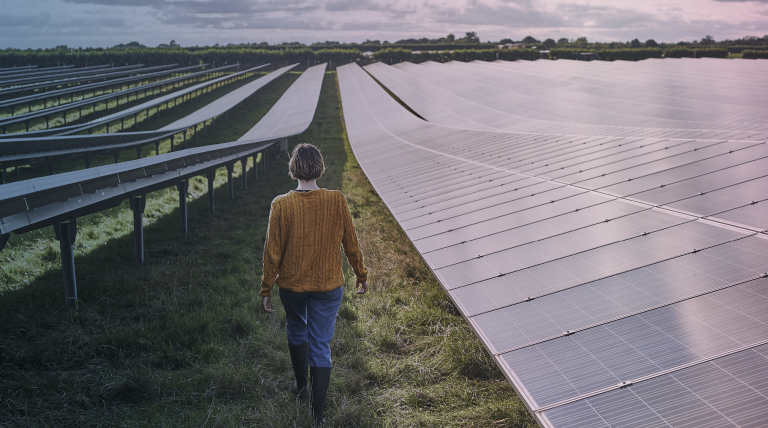For 40 years, we've been driving our country's economic and social progress. Four decades shaping Spain.
Demand for electricity in Spain falls 3.8% in July
- 37.9% of monthly generation came from renewable sources and 60% was produced using technologies that do not emit CO2 equivalent emissions.
- Demand for electricity in the Balearic Islands and the Canary Islands fell by 26.8% and 9.4% respectively when compared to the same month in 2019.
- Solar photovoltaic, which produced 89.9% more than in July 2019, registered a new all-time high for monthly generation at national level, reaching 1,903 GWh.

Red Eléctrica de España publishes the electricity demand for July, the first complete month after the COVID-19 state of emergency was ended in June. In this context, the national electricity demand for July is estimated at 23,298 GWh, 3.8% less than that registered in the same month of the previous year. After having factored in the influence of seasonal and working patterns, this figure decreases by 4.8% compared to July 2019.
The decline in July is less marked than that of previous months compared to the same months in 2019 and continues to show a recovery in terms of energy consumption, particularly if we consider that during the period of the state of emergency (from 15 March to 21 June), demand was 13.3% lower in the Spanish electricity system compared to the same period in 2019.

In the first seven months of 2020, demand is estimated at 143,507 GWh, 7.5% less than in 2019. Again, after having factored in the influence of seasonal and working patterns, demand is 7.6% lower than in the same period last year.
In July, according to data estimated at the time of this press release, generation coming from renewable energy sources represented 37.9% of the total production. Therefore, from January to July, overall renewable generation reached 44.7% of the total electricity generated nationwide.
60% of electricity generation during the month was obtained using technologies which produce zero CO2 equivalent emissions.
With information available as at the time of this press release, solar photovoltaic energy registered in July a new all-time high for monthly generation, producing 1,903 GWh, which represents an 89.9% increase compared to July 2019. Its contribution to the generation mix reached 7.9% of the total nationwide.
For its part, wind energy generation in July reached 4,121 GWh, a value 19.8% higher than in the same period last year, and this accounted for 17.1% of the total generation nationwide.

Demand for electrical energy in the peninsular electricity system falls 2.9%
Demand for electrical energy in the peninsular electricity system in the month of July is estimated at 22,038 GWh, a value 2.9% lower than that recorded in the same month last year. After having factored in the influence of seasonal and working patterns, the demand for electricity decreased by 3.9% compared to July 2019.
In the first seven months of 2020, the demand for electricity on the Spanish peninsula is estimated at 135,903 GWh, a figure that is 7.1% lower than in 2019. In this case, after having factored in the influence of seasonal and working patterns, demand is also 7.2% lower than that registered in the same period last year.
During July, according to data estimated at the time of this press release, 38.7% of the peninsular generation came from renewable energy sources and 61.9% was obtained using technologies which produce zero CO2 equivalent emissions. For its part, wind energy stood at 3,966 GWh, a figure that is 20.8% higher than that registered in July last year and contributed 17.2% to the generation mix.
Demand for electricity in July decreased 26.8% in the Balearic Islands and 9.4% in the Canary Islands
In the Balearic Islands, the demand for electricity in July is estimated at 526,618 MWh, a value that is 26.8% lower than that registered in the same month last year. After having factored in the influence of seasonal and working patterns, the figure decreased by 25% with respect to July 2019. In the first seven months of 2020, overall demand in the Balearic Islands is estimated at 2,800,021 MWh, 20.3% less than in 2019.
Combined cycle, with 74.8% of the total, was the leading source of electricity generation in the Balearic Islands, where renewable technologies and those which produce cero CO2 equivalent emissions, accounted for 6.7%. For the seventh consecutive month, coal-fired generation was not used to produce a single MWh in the Balearic electricity system.
In regard to the Canary Islands, electricity demand is estimated at 693,518 MWh, 9.4% down on that registered in July 2019. After having factored in the influence of seasonal and working patterns, the figure drops by 10.2% with respect to the same month last year. So far in 2020, overall demand in the Canary Islands is estimated at 4,570,424 MWh and falls 10% on the same period last year.
During July and according to current estimated data, combined cycle was the leading technology in the Canary Islands generation mix, with a contribution of 34.4%. Renewables and zero-emission technologies accounted for 26.7% of the total generation on the Canary Islands.
Consult our Daily Balance Report for more information on the National, Peninsular, Balearic Islands and Canary Islands electricity systems as at the close of July.












